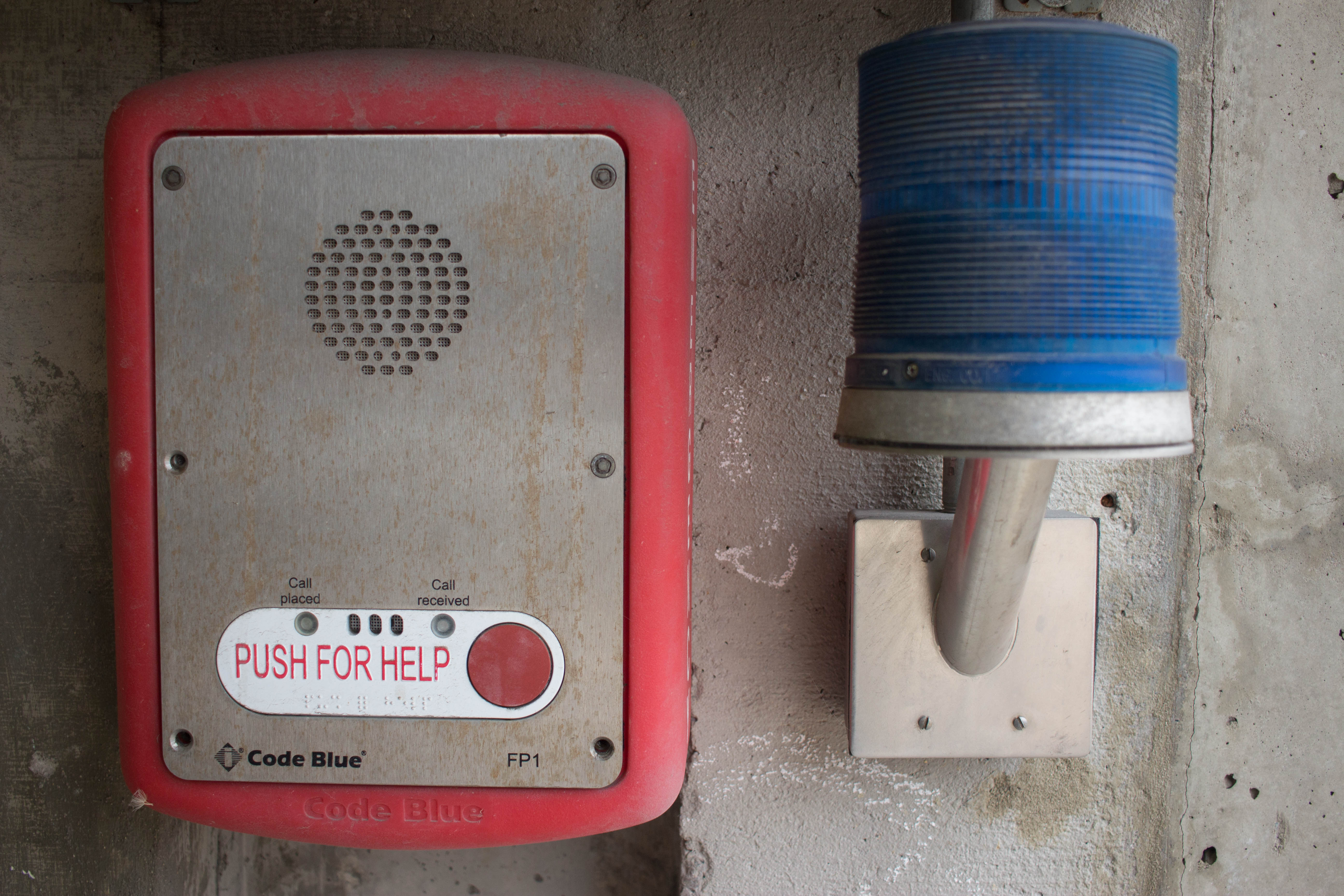What happens when you push the button: Emergency help on campus
En route to morning math class, cold feet are scurrying along the annual winter migration from one heat source to another. Students may pass at least three of them, and have had to at least once wondered — what if they just pushed it? But, sadly the emergency police poles around campus and their all-too-tempting buttons are just part of the everyday scenery. The initial curiosity of them is weakened, but it never really dies.
Well, today the big question will finally be answered: What happens when someone pushes the big, red button?
Two things actually. A blue light at the top of the pole will spring to life and began spinning, alerting bystanders that there is a problem. The pole also doubles as a phone which will immediately connect users to the USU police dispatch center, much like what happens when dialing 911. Help can then be directed to the location.
There are over 35 poles spotting campus, but not a lot of needful button-pushing actually takes place. Since January of this year, the police department responded to 70 calls. This is an increase from 2014 when the number was 51, and 2013 when there were 32 calls. But according to Campus Police Chief Steven Mecham, virtually all of them were phone malfunctions or false alarms.
“Very rarely do we get a phone alarm that is actually somebody in need of help. The ones I can remember have been accidents nearby. Traffic incidents and a few injuries on Old Main Hill,” Mecham said.
The poles were originally put into place in response to an influx of rapes on campus in the late 1980s. Since then, the phones have been replaced due to weather and other abuse every two to three years. The IT team at USU hopes to install more elaborate poles, including cameras, in the next five years or when budget allows. The cameras would enable police to view the situation and only respond when help is actually needed.
“In the last 10 years I think we’ve had one use that really makes the poles worthwhile. But in our minds if it works once, it’s worth it,” said IT team coordinator David Tidwell.
Alumni K’Leis Young was attending USU in 1980 and recalls the atmosphere on campus at the time and the pole’s installation.
“As a girl, it was scary to walk alone on campus in the dark. Someone could have been lurking behind any bush or tree. When I saw the poles, I remember feeling that at least now there was a possibility of getting help in an emergency,” Young said.
Jillyn Haws was student in the late 1980s and also recalls feelings of security in being able to contact help when needed.
“I remember feeling the need to be very careful about going out alone when all this was happening. Having the poles go in seemed like a really good idea since in those days there was no way to contact someone immediately in an emergency,” Haws said.
In today’s world, cell phones make that emergency contact largely possible. But that fact does not rob the poles of their value on campus. Possible preventative measures and feelings of security are both noted benefits.
“Seeing the poles around campus while I’m out running makes me feel safer. I like knowing that if there ever was an emergency I wouldn’t be alone,” said freshman Sydnie Thomas.
Freshman Jason Loosle commented on his initial impression of the poles.
“The first time a noticed them, I really just wanted to push the button. Now I feel that just having them there has protected me,” Loosle said.
Maintaining secure feelings for all on campus is an important goal held by the USU police. They offer police escorts anywhere on campus if students ever feel unsafe.
“If students see anything suspicious or something causes them concern or to feel unsafe they should immediately call for an escort. We don’t mind if it turns out to be nothing, we want the students to feel safe. We would encourage them to call anytime,” Mecham said.
The USU campus police and be reached at (435) 797-1939.
— emilyabel25@gmail.com

